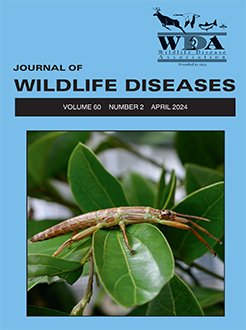The order Procellariiformes includes several species of seabirds that perform long-distance migrations crossing all the oceans. These movements may contribute to the dispersal and exchange of hemoparasites, such as haemosporidians. There is a lack of studies regarding the order Haemosporida in Procellariiformes, and, to date, only the genus Plasmodium has been reported. This survey investigated the occurrence of the three genera of haemosporidians, Plasmodium, Haemoproteus, and Leucocytozoon, in samples collected between 2013 and 2022 from 95 individuals of 14 species of Procellariiformes from southern Brazil, including live animals in rehabilitation centers, individuals caught as incidental bycatch, and carcasses found along the coast. A total of 171 samples of blood and fragments of liver and spleen were analyzed, with extracted DNA being subjected to a nested PCR followed by phylogeny analysis. All animals were negative for Plasmodium spp. and Leucocytozoon spp., but one Black-browed Albatross (Thalassarche melanophris) and one Manx Shearwater (Puffinus puffinus) specimen were positive for Haemoproteus spp. The sequences obtained from positive seabirds did not show 100% similarity with other known lineages available in the MalAvi database and thus were probably novel lineages. However, one sequence clustered together with Haemoproteus noctuae, a parasite from Strigiformes, while the other was grouped with Haemoproteus columbae, which is classically related to Columbiformes. These results suggest that both positive animals may have become infected when beached or in rehabilitation centers by a spillover of vectors from local birds. This highlights the importance of surveillance of the health of Procellariiformes regarding the possibility of dissemination of new pathogens in different bird populations.
How to translate text using browser tools
5 April 2024
MOLECULAR SURVEY OF HAEMOSPORIDIAN PARASITES IN PROCELLARIIFORMES SAMPLED IN SOUTHERN BRAZIL, 2013–22
Annelise Zabel Sgarioni,
Patricia Serafini,
Alice Pereira,
Tiffany Emmerich,
Thamires Pires de Pontes,
Douglas Coutinho Machado,
Paula Reis Ribeiro,
Derek Blaese de Amorim,
Guilherme Klafke,
José Reck
ACCESS THE FULL ARTICLE

Journal of Wildlife Diseases
Vol. 60 • No. 2
April 2024
Vol. 60 • No. 2
April 2024
albatross
Haemoproteus
pathogen
Petrel
protozoan
vector-borne




